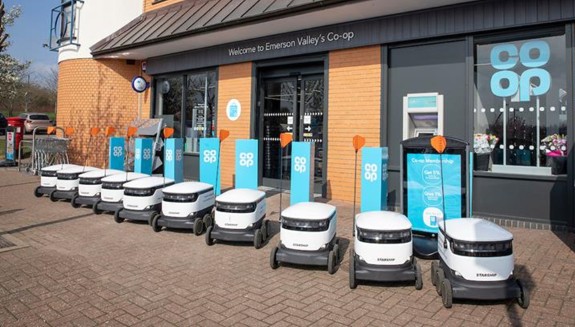Co-op and Starship Technologies have extended their partnership in Northampton, with an additional 20,000 households in the area now able to access the grocery delivery service via robots.
A further five Co-op stores across the town are now offering same-day delivery through the fleet of Starship robots, bringing the total reach to 80,000 households in Northampton since its launch in November 2020.

Orders are made through the Starship food delivery app, with groceries picked in local Co-op stores, which act as micro-distribution hubs that can offer delivery in as little as one hour or less.
Chris Conway, Co-op’s Head of eCommerce, said: “Co-op is committed to exploring new and innovative ways to increase access to our products and services. Our members and our customers lead busy lives and ease, speed and convenience is at the heart of our approach.
“Co-op stores are well placed, close to our customers, to serve shoppers locally. Orders are picked locally, in store, and a key part of our strategy is to use our physical footprint to also offer same-day, rapid, home deliveries. As a convenience retailer, the ability to come into stores is important to customers, but shoppers also increasingly want flexible options online – our focus is on getting closer to our customers and to provide what they need, conveniently, however they choose to shop with us.”
Andrew Curtis, UK Operations Manager at Starship Technologies, added: “The environmental benefits of autonomous delivery are clear, and it has also been very encouraging to see how much the robots have been welcomed and integrated as part of the local community in Northampton.”
Northampton residents can choose from a range of over 2,000 grocery items, schedule their delivery, then drop a pin where they want their delivery to be sent. They can watch in real-time via an interactive map as the robot makes its journey to them. Once the robot arrives, they receive an alert, and can meet and unlock it through the app.
The robots use a combination of sensors, artificial intelligence and machine learning to travel on pavements and navigate around any obstacles, while computer vision-based navigation helps them map their environment to the nearest inch.




